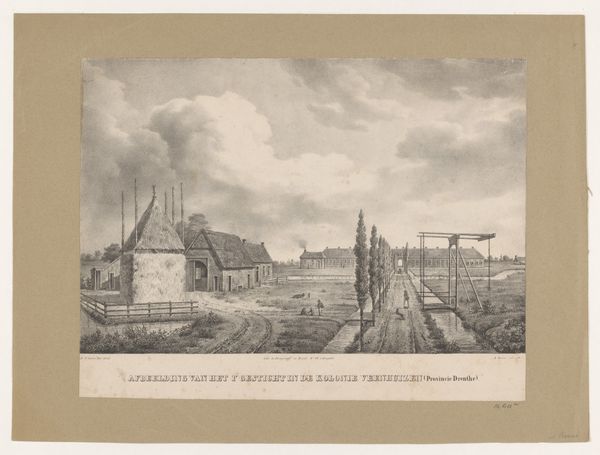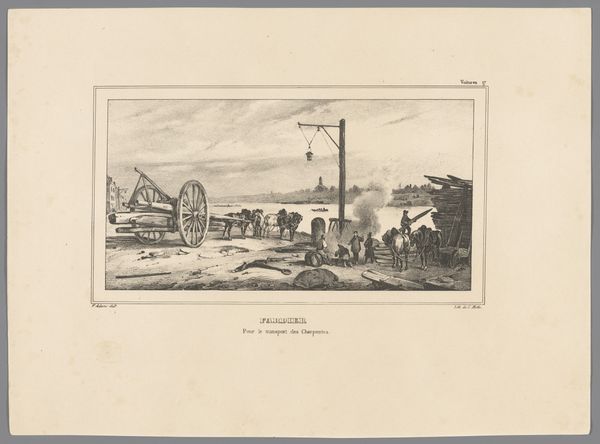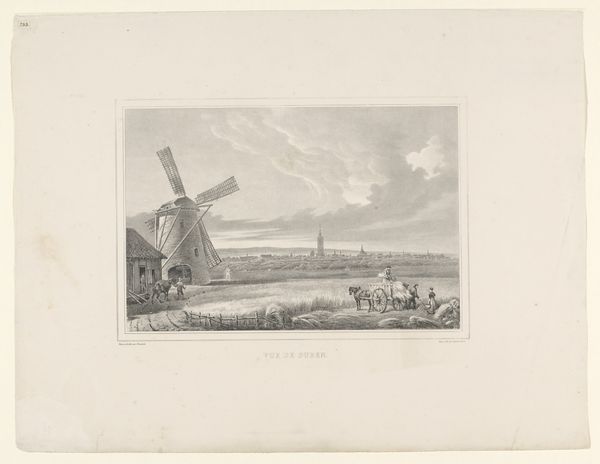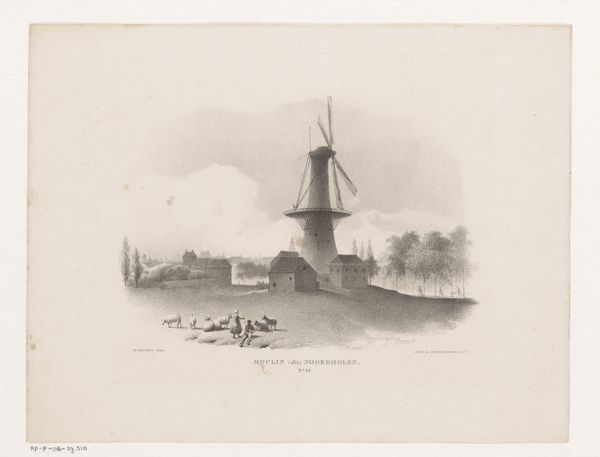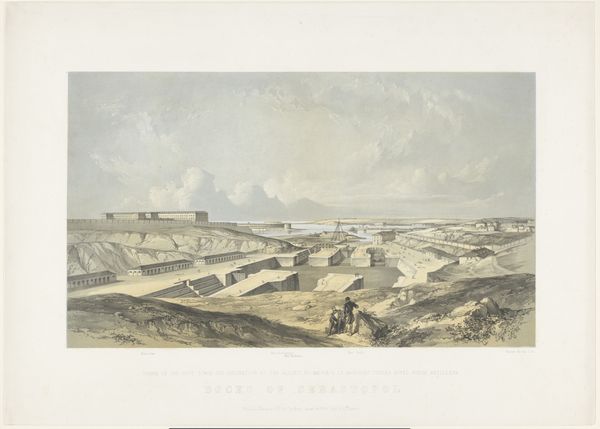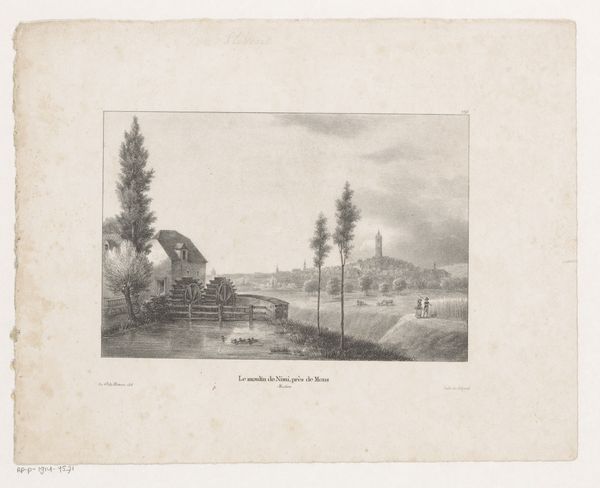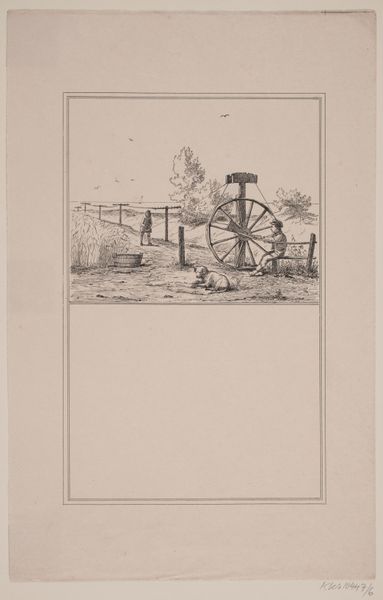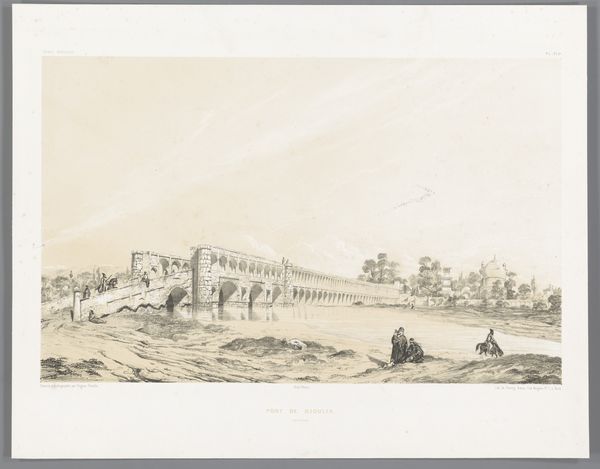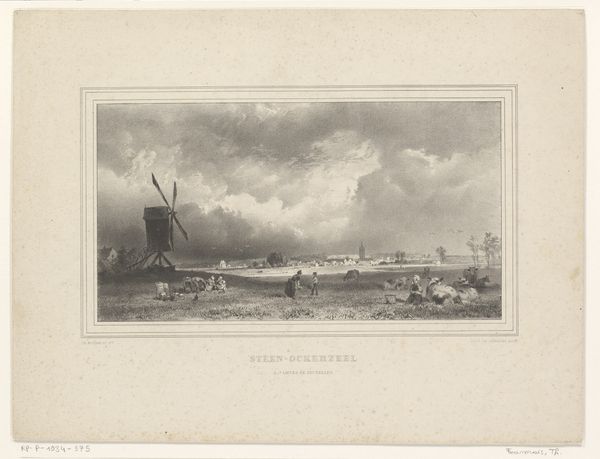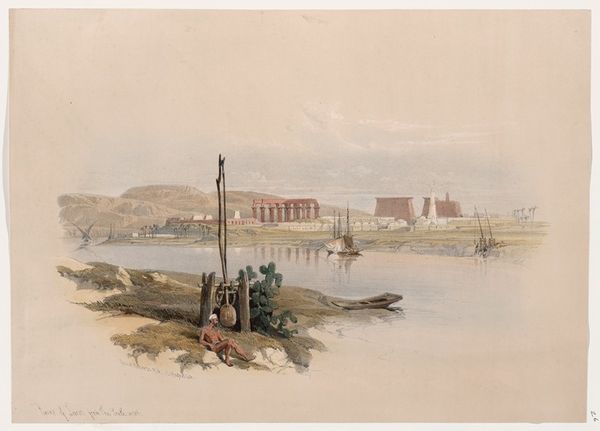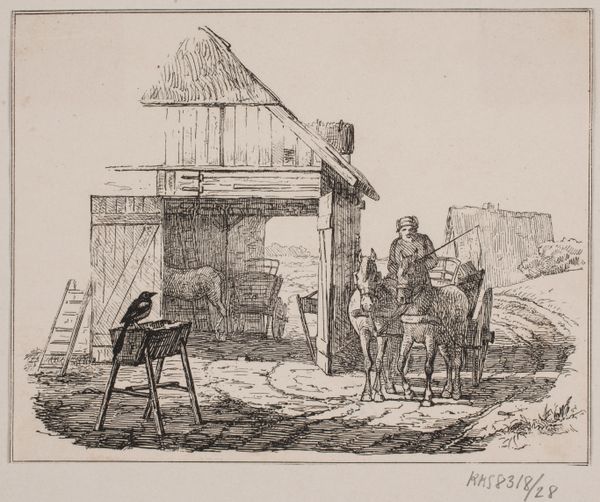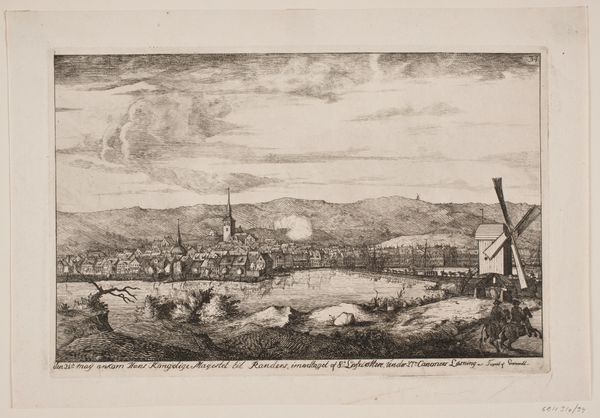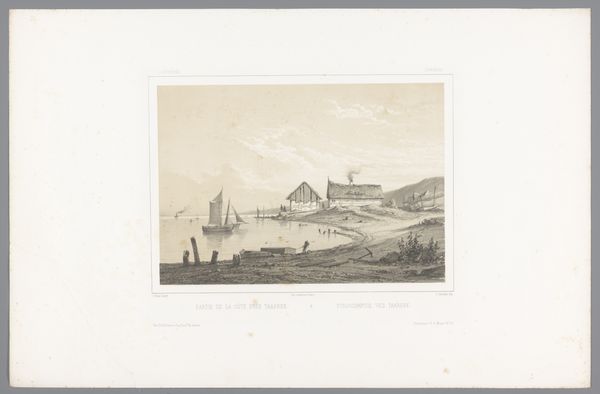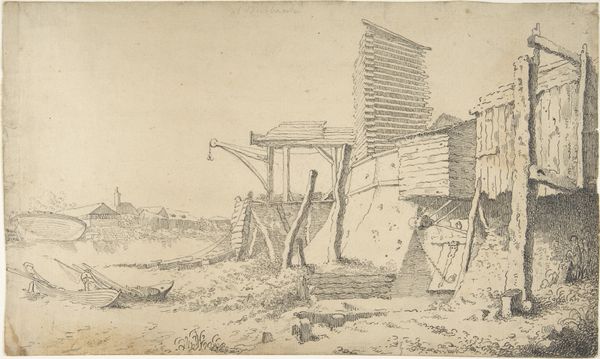
paper
#
water colours
#
narrative-art
#
landscape
#
paper
#
oil painting
#
underpainting
#
watercolour illustration
#
watercolor
#
indigenous-americas
Dimensions: 5 5/8 × 9 in. (14.3 × 22.9 cm) (image)9 9/16 × 12 13/16 in. (24.3 × 32.5 cm) (sheet)17 9/16 × 21 1/2 × 1 1/8 in. (44.6 × 54.6 × 2.9 cm) (outer frame)
Copyright: Public Domain
Editor: This watercolor, "Indian Burial Ground," created by Seth Eastman between 1849 and 1855, is surprisingly delicate given its subject matter. The wispy clouds and soft earth tones almost romanticize what I imagine would be a somber place. What do you see in this piece? Curator: The symbols embedded here speak volumes. Elevated burial platforms, as depicted, were not uncommon among certain Plains tribes. They signify a connection between the earthly and spiritual realms, literally raising the deceased closer to the heavens. Do you notice the orientation of the platforms? Editor: They seem to face toward the west... Is that significant? Curator: Indeed. Westward often symbolizes the journey to the afterlife in many indigenous belief systems. Notice also how the landscape itself, despite its perceived "delicacy," feels vast and unending. The emotional weight carried within this setting signifies not only the resting place of individuals but also the collective memory and continuity of a people. What feelings does that evoke for you? Editor: A sense of profound respect, but also a melancholy awareness of loss. The artist, by showing us this cultural practice, encourages contemplation of life cycles. Curator: Precisely. The power of such images resides in their capacity to hold memory, and in doing so, transcend time, ensuring that stories of peoples are handed down, even when facing erasure. Editor: I never thought about landscape holding a community’s memory this way, amazing! Curator: And art acts as the bridge. These are not just representations but carriers of cultural inheritance.
Comments
minneapolisinstituteofart over 1 year ago
⋮
U.S. Army Captain Seth Eastman was a trained artist who served twice on the frontier at Minnesota’s Fort Snelling, from 1830 to 1832 and again from 1841 to 1848. His extensive firsthand, peaceful encounters with Native Americans gave him extraordinary opportunities to observe their customs and practices, which he documented in his art. According to scholar Christian F. Feest, this Dakota graveyard with its elevated burial sites was located along the present-day Minnesota River, seven miles above Fort Snelling. The fencing was intended to keep animals away from the lower graves.
Join the conversation
Join millions of artists and users on Artera today and experience the ultimate creative platform.
